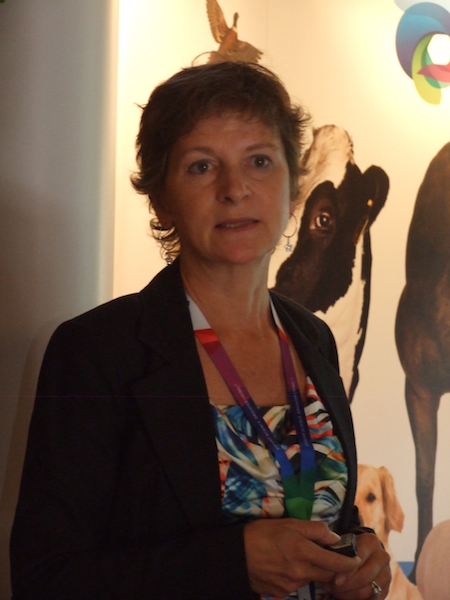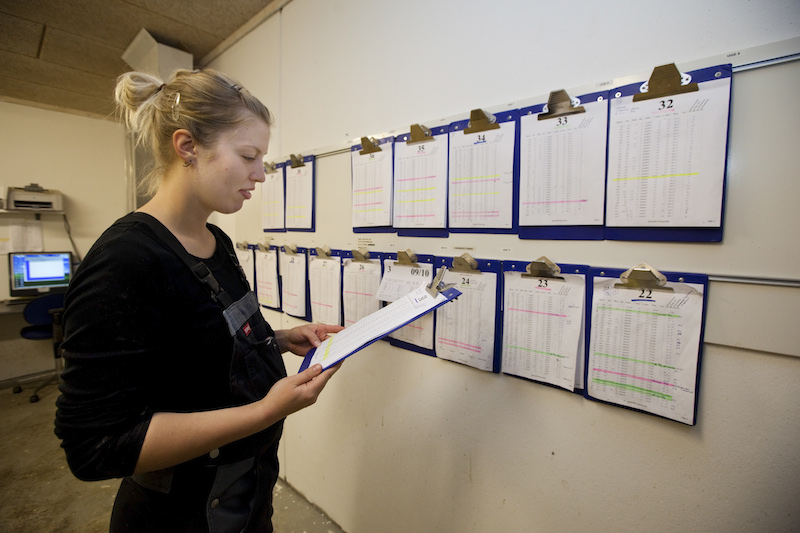Antibiotics consumption in pig production is a very emotive issue and the pig industry is being taken to task over this. Quite rightly, today’s consumer is wanting to know how his or her food is produced and what exactly the pig is eating and receiving in terms of medication. Some parts of the tabloid press like to convey the message that antibiotics are “shovelled into pigs”, which we all know is rubbish, but nevertheless the pig industry must be able to defend their use.
One of the big problems is that developing new antibiotics, for both humans and animals, is a hugely expensive business and hence new ones are few and far between. We still rely hugely on penicillin which was, believe it or not, discovered way back in 1928, which was 86 years ago. No wonder many bacteria are resistant to it.
Going back to basics, it’s worth remembering that stressed pigs are more likely to suffer disease, which invariably is treated with antibiotics. Stress and poor management are linked, hence improving managem

ent means healthier pigs — less need for the needle! Going back a few years, Europe was ravaged by PMWS (as was Canada), with herds suffering huge post weaning losses, unresponsive to medication, plus of course PCV 2 vaccines were not available then. French swine researcher Dr. Francois Madec, whose job was at risk if he didn’t find a solution, came up with the now famous 20 point “Madec Plan”. The key points involved minimizing stress, moving to batch farrowing (not practised in the UK at that time) and meticulous disinfection. Reduced mixing, keeping pigs in a maximum group of 13, feeding better quality feeds and running buildings at above recommended temperatures all helped to reduce stress levels and improved liveability.
The Danes have always taken a responsible attitude to the use of antibiotics. Back in the 1960’s when other countries were shoveling antibiotics into their pigs as an easy way to cure disease problems, the Danes were adopting a much more careful approach in terms of the use of drugs in their pig industry. In the mid 1960’s the author spent a year carrying out research at the Agricultural University in Copenhagen. The pig department was headed up by Professor Hjalmar Clausen, the legendary father of the Danish pig industry. My research project involved feeding boughtin piglets weaned at two days of age, on liquid skimmed milk diets (this was actually being carried out commercially in Germany at that time, using bought-in piglets, reared in tiered cages). My supervisor, Henning Nielsen, decided that to protect the trial piglets from picking up infections such as E.Coli we needed to supplement the diets with Aureo SP 250, a cocktail of 100ppm Aureomycin, 100ppm Streptomycin and 50ppm Penicillin. I well remember when we met up with Prof. Clausen to present our proposal. When he saw the proposed medication he practically exploded at the idea, but eventually he did calm down and allowed the medication to be added to the piglet feed, although of course such drugs were in no way prescribed for normal commercial pig production.
Moving forward, there had been concerns for many years in Denmark about anti-microbial resistance and threats to human health and hence in 1995 the Danish Integrated Antimicrobial Resistance Monitoring and Research Programme, (DANMAP), came into being established on the initiative of the Danish Ministry of Health and the Danish Ministry of Food, Agriculture and Fisheries. DANMAP reports are published annually, in Danish and English, with the 2012 publication running to no less than 130 pages, a hefty tome by any standards and free to access on the internet. The significance to pig producers is that they (producers) are all listed on DANMAP/Vetstat database in terms of their consumption of anti-microbials as are all the vets, and in their case, the amount and type of drugs they prescribe. Data is extremely detailed, showing the exact amounts of antibiotics prescribed monthly for different disorders and by category of pig.

Individual herd data can be compared to national and regional data sets etc. Another feature of Danish production, differing from the UK, is that farmers get a prescription from their vet which is then taken to the local pharmacy for dispensing.
In the early 1990s anti-microbial use (prescribed and AGPs) in the Danish industry was steadily increasing and hence a ban on giving AGPs to finishers was introduced in 1998, resulting in a drop in total microbials used in 1999. This was short lived as the amounts of prescribed anti-microbials increased through the early 2000’s. Anti-microbials consumption steadily increased through to 2009 which was causing concern, although pig production nationally was increasing so it could be argued that consumption per pig was not increasing, just that a larger pig herd would need more anti-microbials, because of the increased number of pigs.
In the early 1990s anti-microbial use (prescribed and AGPs) in the Danish industry was steadily increasing and hence a ban on giving AGPs to finishers was introduced in 1998, resulting in a drop in total microbials used in 1999. This was short lived as the amounts of prescribed anti-microbials increased through the early 2000’s. Anti-microbials consumption steadily increased through to 2009 which was causing concern, although pig production nationally was increasing so it could be argued that consumption per pig was not increasing, just that a larger pig herd would need more anti-microbials, because of the increased number of pigs.
However, the increased amounts of anti-microbials being used caused considerable disquiet and so in 2010 the authorities introduced the “Yellow Card” scheme to decrease anti-microbials usage. In addition, in 2010 there was also a ban introduced on using cephalosporins. Threshold limits for anti-microbial use for sows, weaners and finishers were introduced which, incidentally, were being exceeded by around 10 per cent of producers. In July 2010 letters were sent to 1249 producers who were close to, or exceeding, the permitted levels. Producers had the chance to challenge the data relating to drug use on their units, before government legislation was enacted in November of that year.
Roughly half those producers breathed a sigh of relief but even so, 500 producers received an unwelcome early Christmas present, in the shape of a yellow card. The consequences of the card are that the herd is audited for nine months plus the antibiotic use on the farm must be reduced to below the permitted levels. The yellow card status is re-evaluated after nine months. A producer may be given a red card and in this case producers may have to reduce stocking rates which effectively reduces antibiotic use.
The yellow card concept has been in place now for nearly three years and in fact drug consumption dropped by 20 per cent in 2011, with water medication showing the biggest decline.
In 2012 overall consumption levelled out, although there was a five per cent spike in January 2013. Interestingly, because of all the detailed recording producers know exactly how much medication they are using and can fine tune things so that they don’t get shown the dreaded yellow card.
In 2012 overall consumption levelled out, although there was a five per cent spike in January 2013. Interestingly, because of all the detailed recording producers know exactly how much medication they are using and can fine tune things so that they don’t get shown the dreaded yellow card.
In contrast to the downward trend in microbials consumption , the use of vaccines has increased between 20 and 30 per cent. Denmark didn’t suffer as badly as England did with PMWS and this is reflected in the relative PCV2 vaccination rates, with English levels being more than double than the Danish ones.
Dr. Andreasen stated that the lowering of microbial use was due to the following factors :
*The unique Danish SPF health management system
*High levels of management
*The Danish co-op system
*The immediate application of new production
technology
*Vaccination strategies
*Eradication programmes
Looking ahead, there are several political initiatives in
the pipeline, namely:
*Taxes on broad-spectrum antimicrobials
*No taxes on vaccines
*Restricted use of oral medication
*More frequent veterinary visits
*More regulatory lab diagnosticsIt would appear that Danish producers are being imposed on with these initiatives and will not benefit financially from them. Where they will benefit however, is in terms of a better press and an improved more responsible image in the eyes of the Danish man and woman in the street.
The Danish pig industry takes great pride in developing new initiatives within the EU. Given that Brussels is looking very closely at the DANMAP/Vetstat initiative as a blueprint for other EU members, yellow cards might soon be appearing all over Europe. •
— By Norman Crabtree– This report was based predominantly on a paper presented by Dr. Margit Andreasen, Boehringer Ingleheim, Denmark, at the 2013 DSM Monogastric Conference, Morley, Derbyshire, UK.
Dr. Andreasen stated that the lowering of microbial use was due to the following factors :
*The unique Danish SPF health management system
*High levels of management
*The Danish co-op system
*The immediate application of new production
technology
*Vaccination strategies
*Eradication programmes
Looking ahead, there are several political initiatives in
the pipeline, namely:
*Taxes on broad-spectrum antimicrobials
*No taxes on vaccines
*Restricted use of oral medication
*More frequent veterinary visits
*More regulatory lab diagnosticsIt would appear that Danish producers are being imposed on with these initiatives and will not benefit financially from them. Where they will benefit however, is in terms of a better press and an improved more responsible image in the eyes of the Danish man and woman in the street.
The Danish pig industry takes great pride in developing new initiatives within the EU. Given that Brussels is looking very closely at the DANMAP/Vetstat initiative as a blueprint for other EU members, yellow cards might soon be appearing all over Europe. •
— By Norman Crabtree– This report was based predominantly on a paper presented by Dr. Margit Andreasen, Boehringer Ingleheim, Denmark, at the 2013 DSM Monogastric Conference, Morley, Derbyshire, UK.






